The Trans-Siberian Orchestra tour is demanding. Each day could bring multiple shows and meet-and-greets with only a few days off. We caught up with TSO’s East Coast guitarists Joel Hoekstra and Chris Caffery (above) before their Nashville doubleheader.
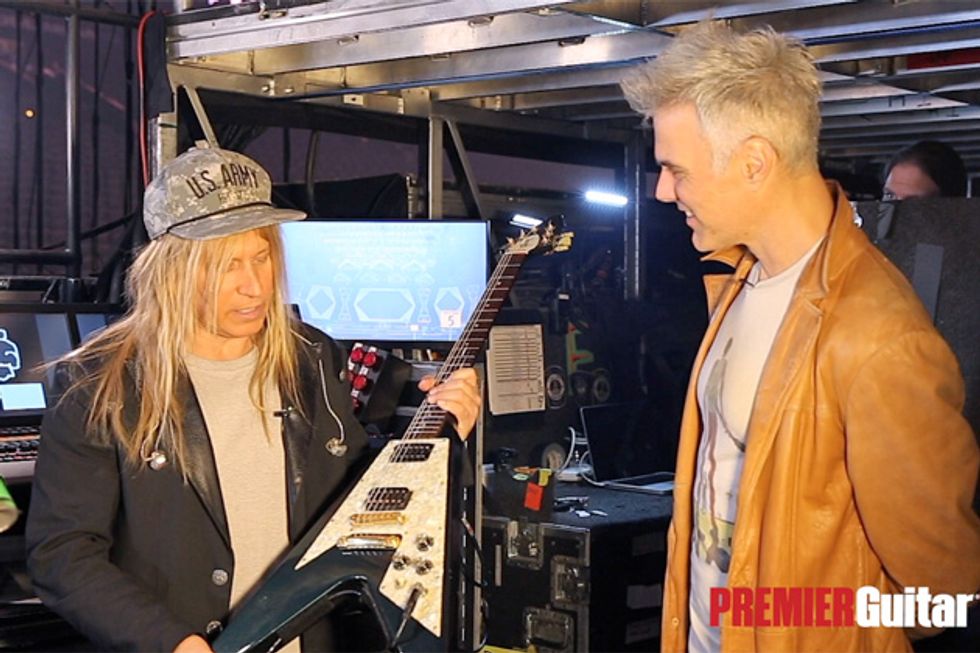
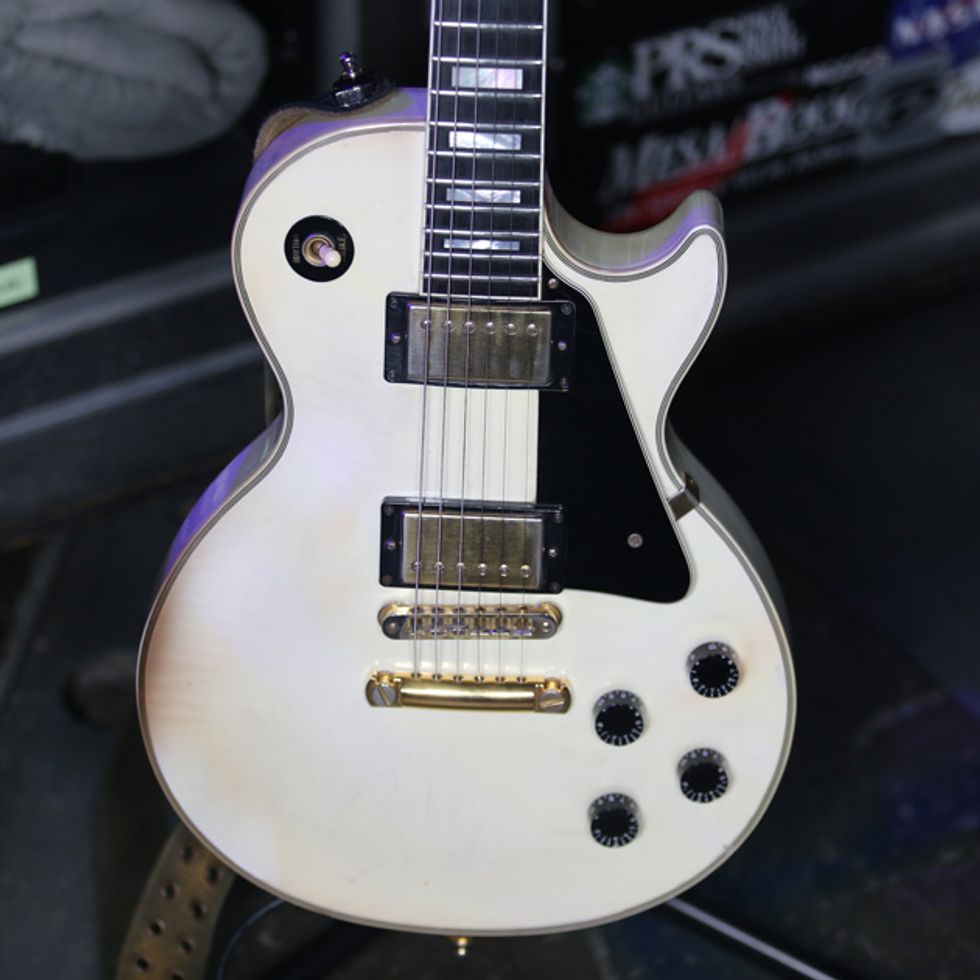
Joel Hoekstra is a longtime Les Paul guy. This 2007 Gibson Les Paul Custom is his main axe for the TSO show. It’s totally stock, and like all of his guitars, it’s strung up with Ernie Ball Power Slinky .011–.048 strings.

Joel Hoekstra’s 2017 Gibson Firebird Custom also features an ebony fretboard and 490R/ 498T humbuckers.
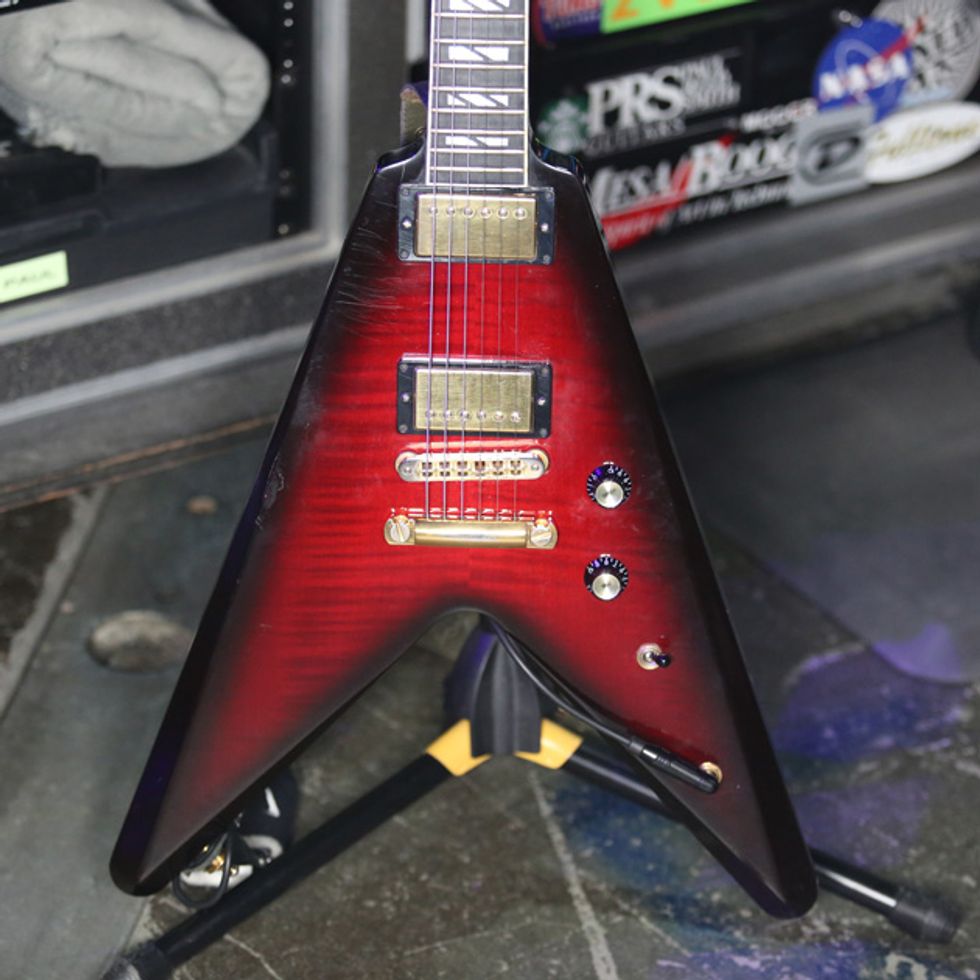
Here’s Joel Hoekstra’s 50th Anniversary Gibson Flying V in a Brimstone Burst finish.
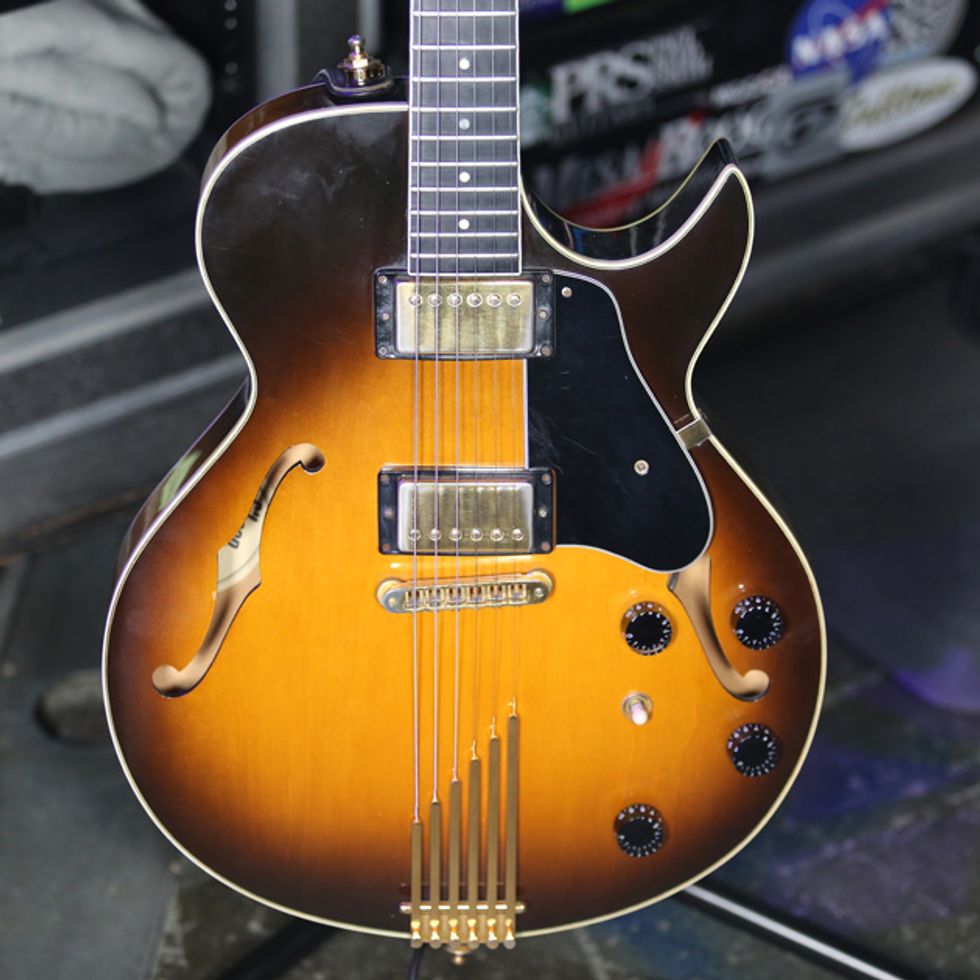
This 1991 Gibson Howard Roberts Fusion III was originally purchased for jazz/swing gigs, but Joel Hoekstra finds it works well with the TSO.
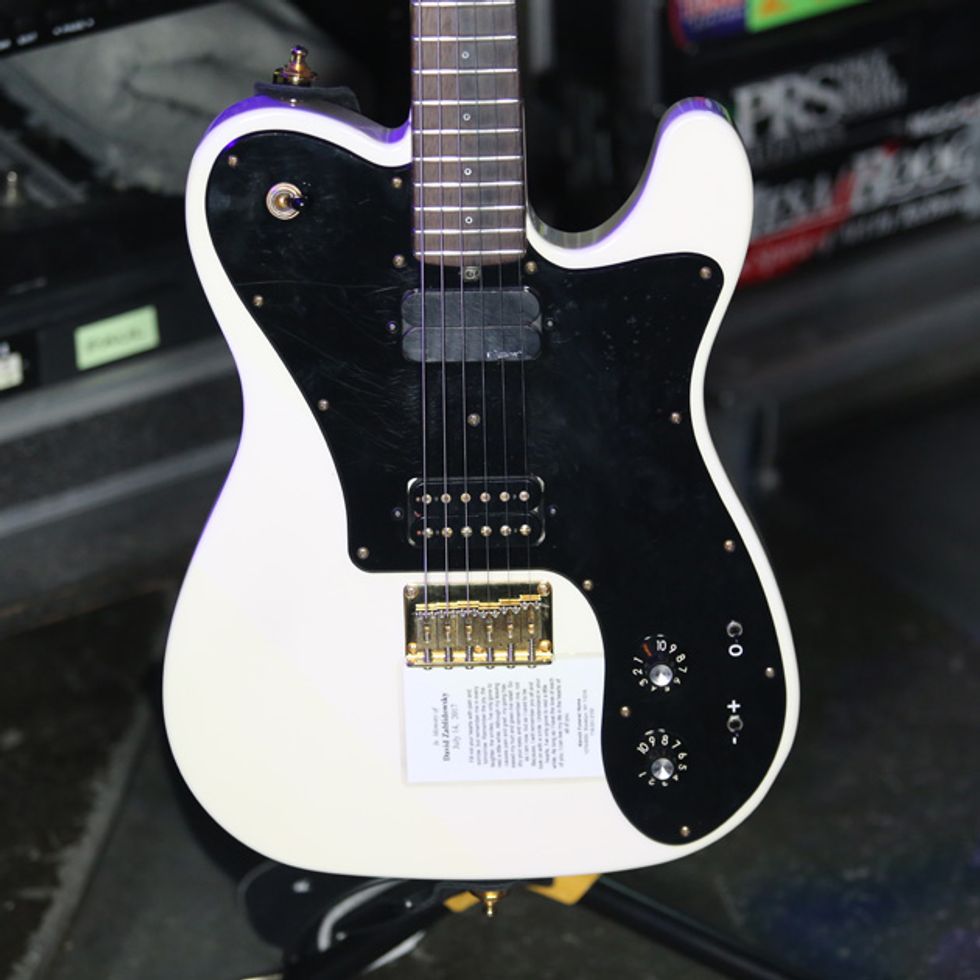
Joel Hoekstra also grabs this 2016 Friedman Vintage-T, which is loaded with a Fernandes Sustainer, and decked out in Vintage White to match the holiday theme. Beneath the bridge you’ll notice a small card of text that was taken from David Zablidowsky’s funeral and placed there to honor Joel’s former bandmate. (Zablidowsky was killed when a semi-truck hit the touring vehicle for Adrenaline Mob in 2017.)
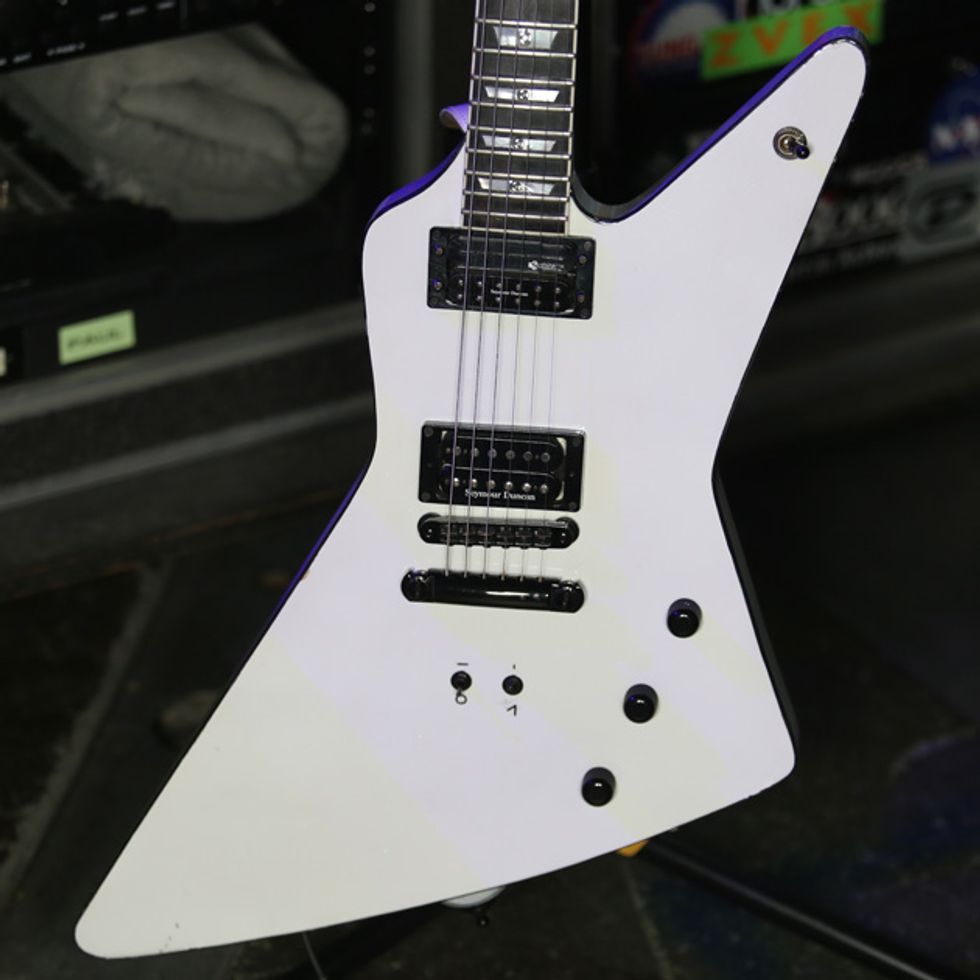
This 2010 white Explorer-style guitar was built for Joel Hoekstra by Atomic Guitar Works.
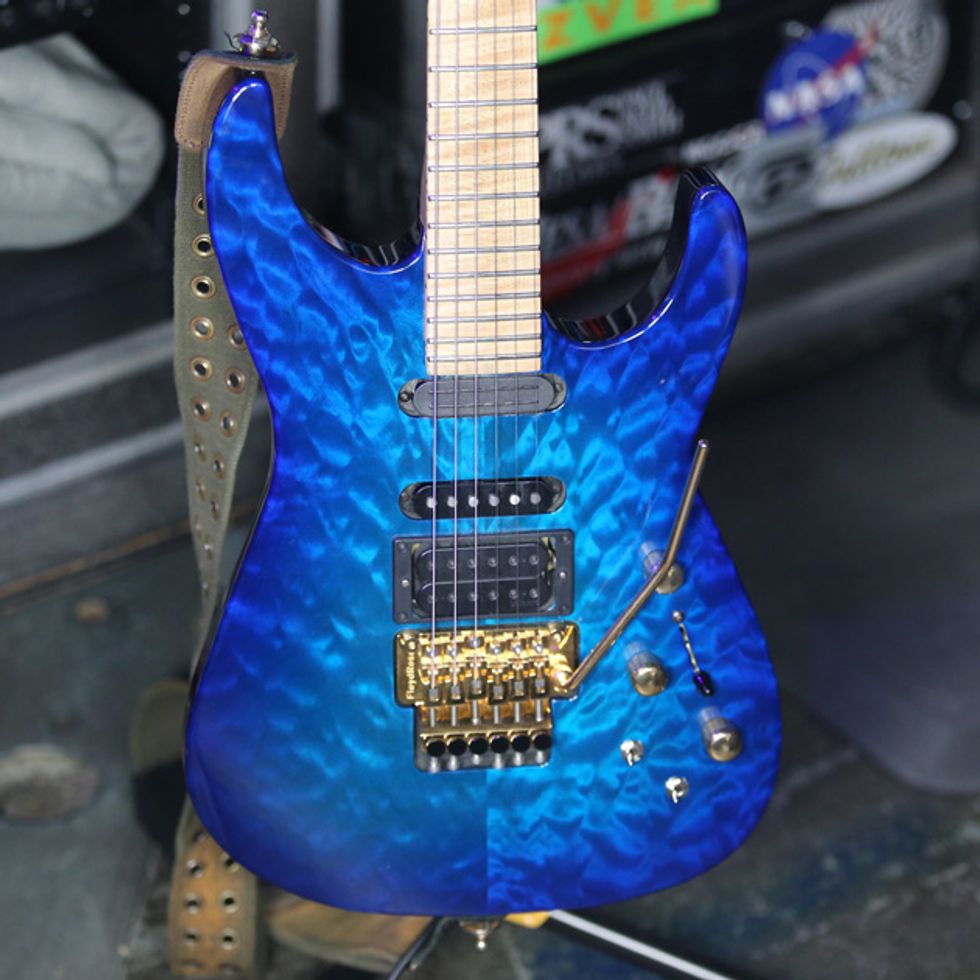
Joel Hoekstra also rocks this 2010 Jackson USA Signature Phil Collen PC1 with a DiMarzio DP152 in the bridge, a DP116 in the middle, and a Fernandes PC1 Sustainer Driver in the neck.

Ironically through a Steve Vai hookup, Joel Hoekstra got his hands on this brand-new Ibanez JS1CR Satriani sig with a Fernandes Sustainiac in the neck.
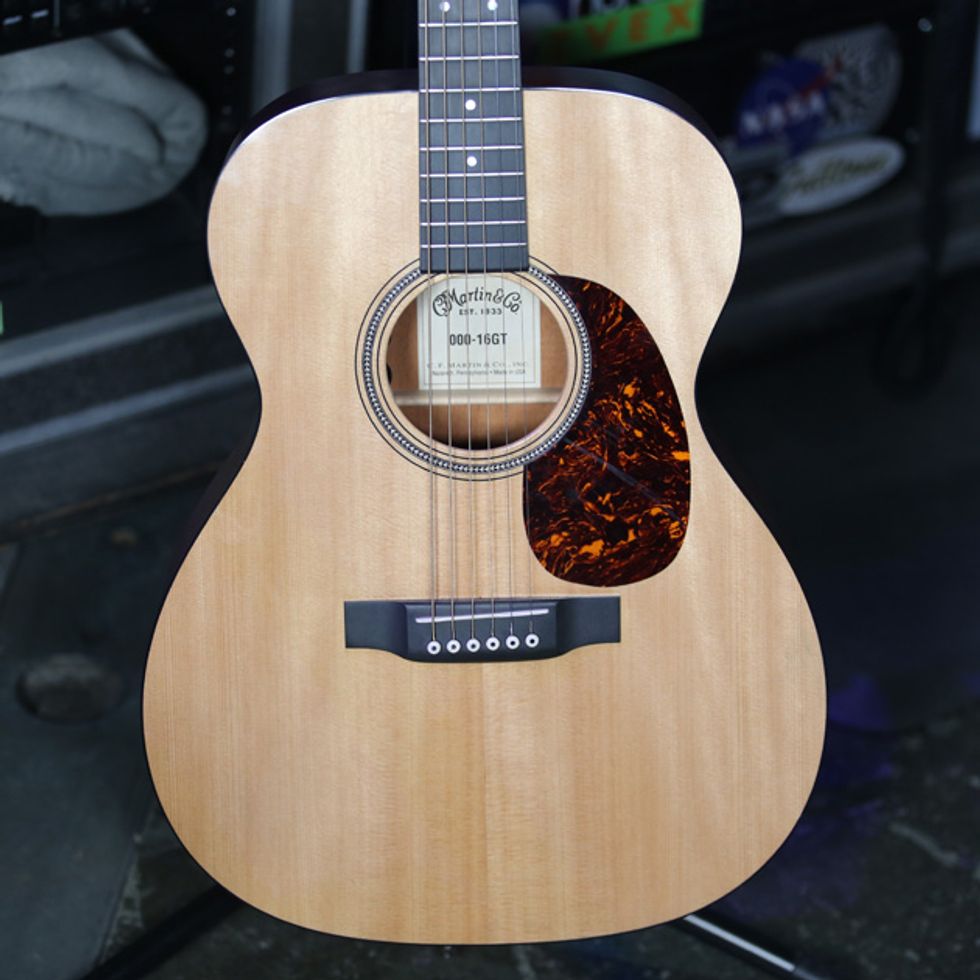
When things get mellow Joel Hoekstra grabs this 2010 Martin 000-16GT armed with a Fishman Matrix Infinity VT preamp. It’s strung up with Ernie Ball 80/20 Bronze strings (.013–.056).
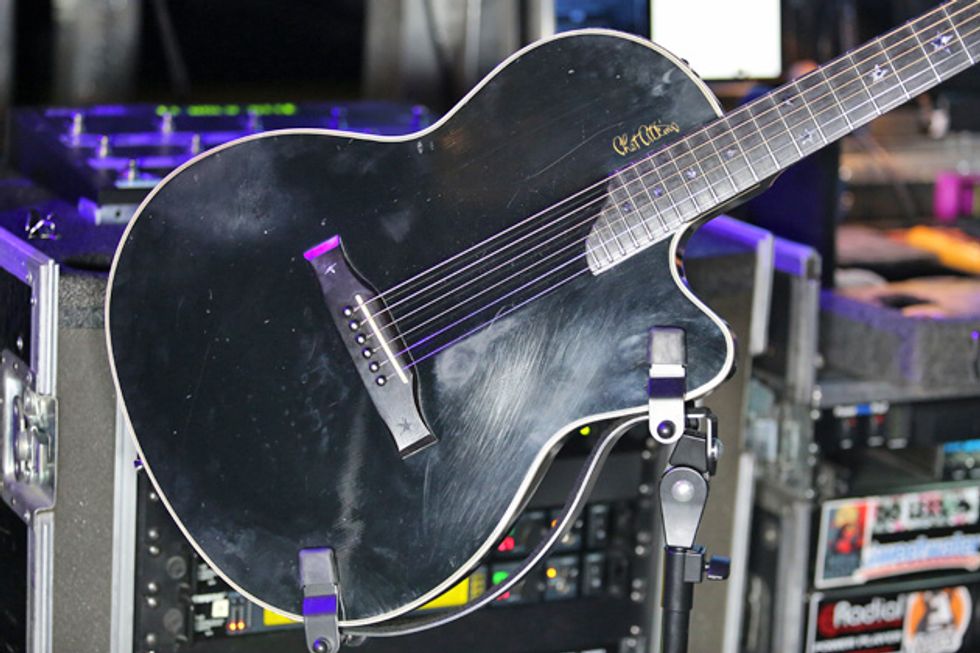
For quicker acoustic changes, Joel Hoekstra uses this early ’90s Gibson Chet Atkins SST.

Joel Hoekstra uses the Fractal Audio Axe-Fx II XL with his tech, Galen Henson, controlling the effects in real-time with an off-stage Voodoo Lab Ground Control switcher. Hoekstra mainly uses two sounds:
- A dry rhythm sound based on the Mesa/Boogie TriAxis model into a 4x12 Recto cab model. This same preset is used with delay programmed to song tempos when needed.
- A lead sound based on the Soldano SLO-100 model into a 4x12 Recto cab model, with a TS808 model in front, delay programmed to song tempo, and a plate reverb.
There’s also a clean sound used in just a couple of instances that’s based on a Fender Vibroverb model into a Bassman cab model with light chorus, delay, and reverb.
The rig itself consists of four channels of Shure UR4D wireless, one channel for acoustic guitar direct to the board and three channels for electric guitar into a Whirlwind Multi-Selector which sends the signal to the Fractal that sends the signal directly to the board.
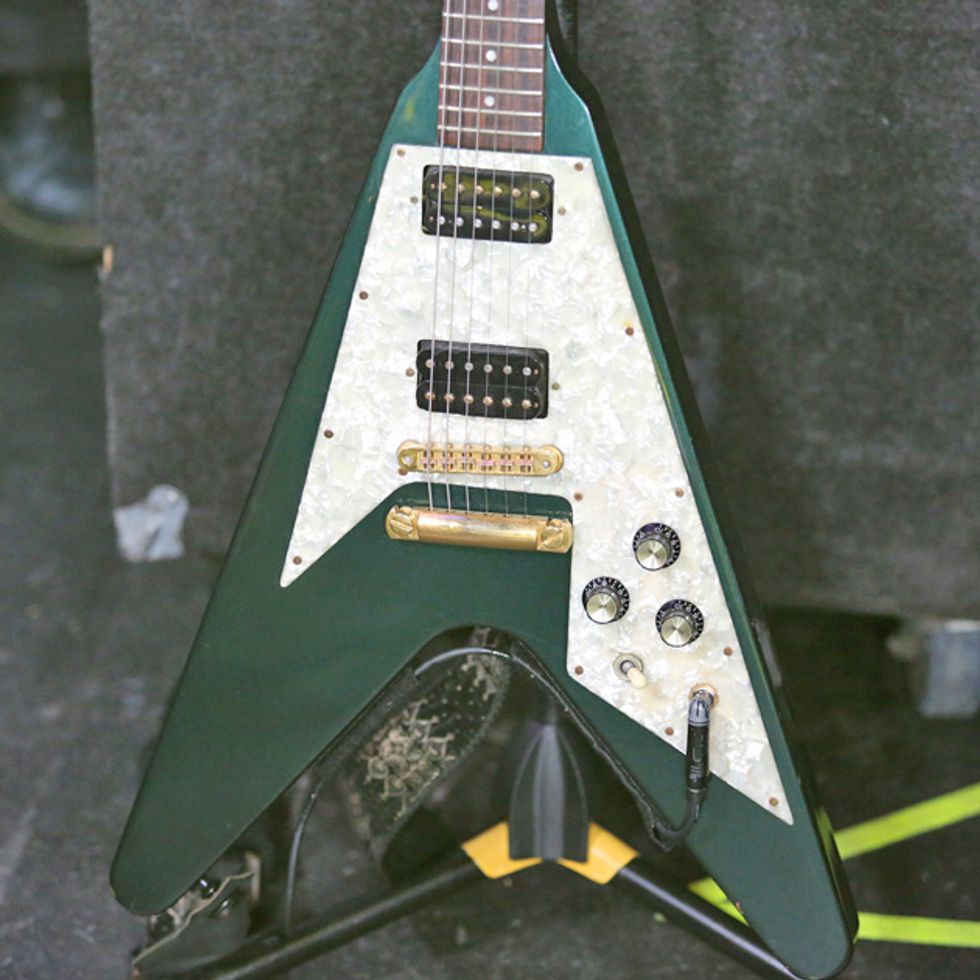
Chris Caffery recently purchased a trio of matching Gibsons in Hunter Green. The first one is a stock 1992 Custom Shop Flying V. This and all but one other guitar, is strung with GHS .010–.052 nickel strings.
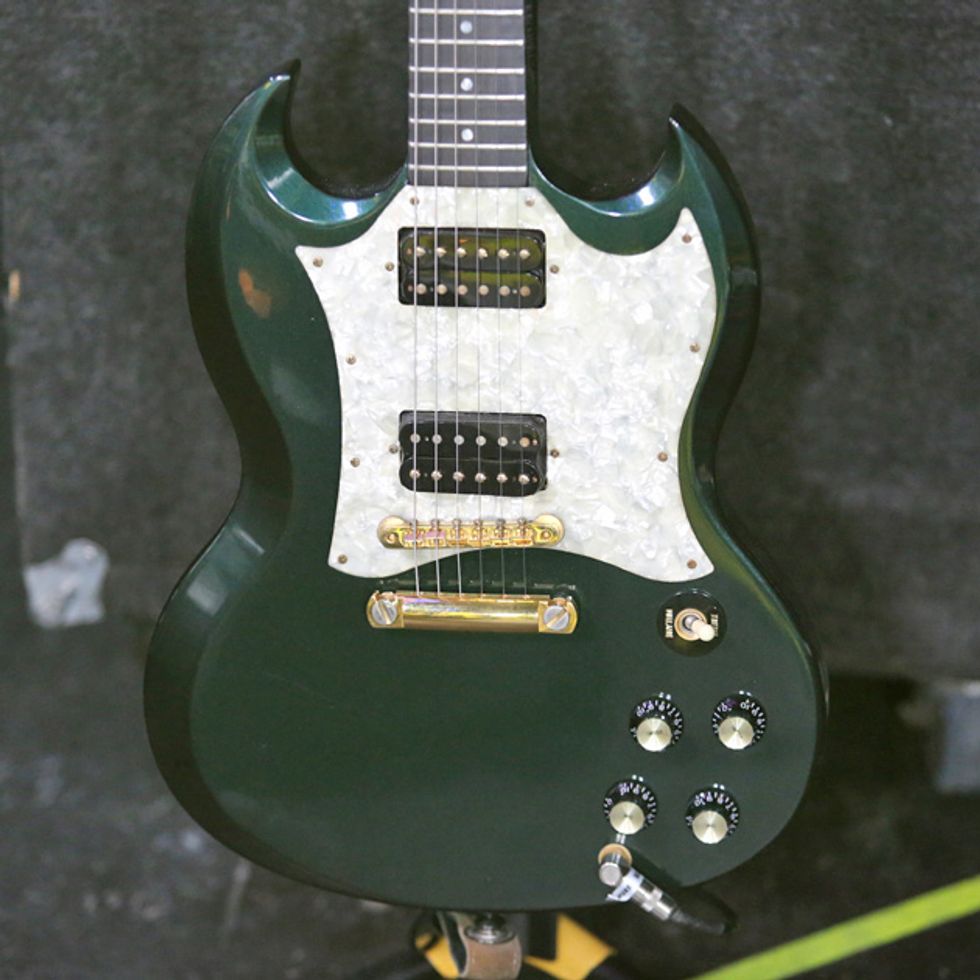
The second matching guitar is Chris Caffery’s ’93 Gibson SG.
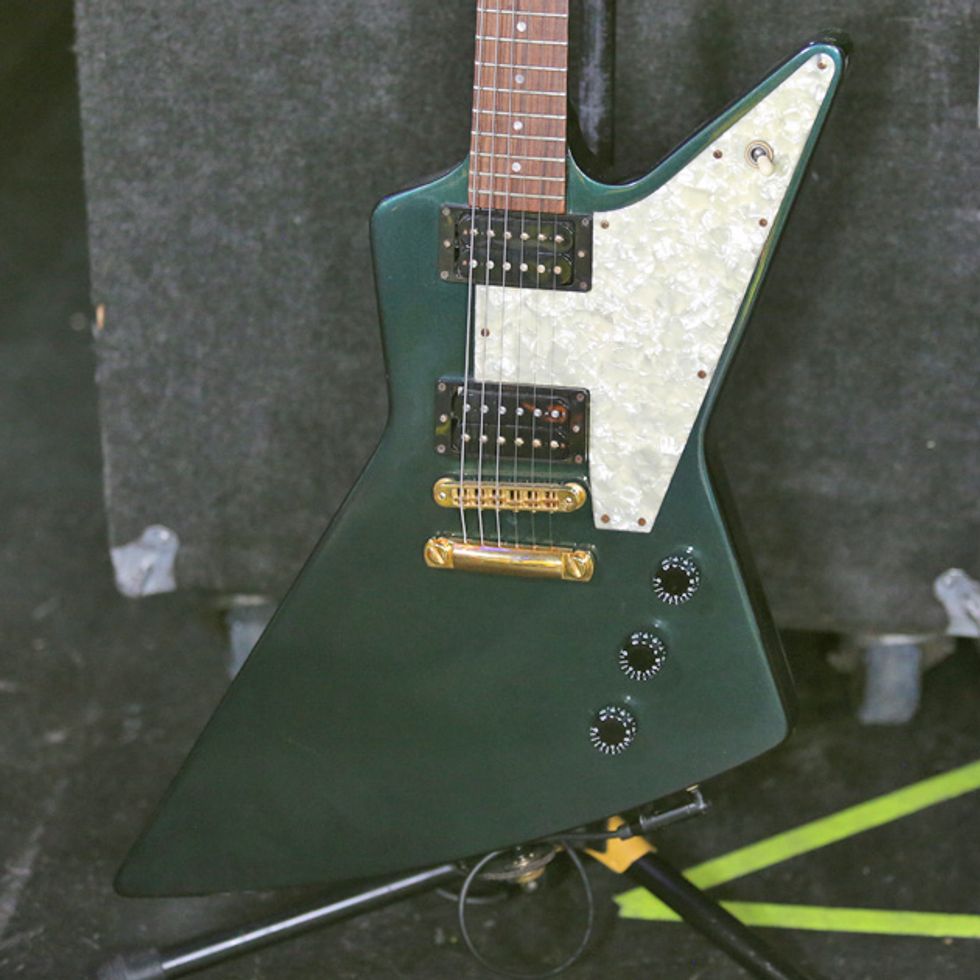
Finally, we have Chris Caffery’s ’92 Gibson Explorer. This guitar is kept in drop-C tuning (C–G–C–F–A–D) and uses GHS .011–.056 strings.
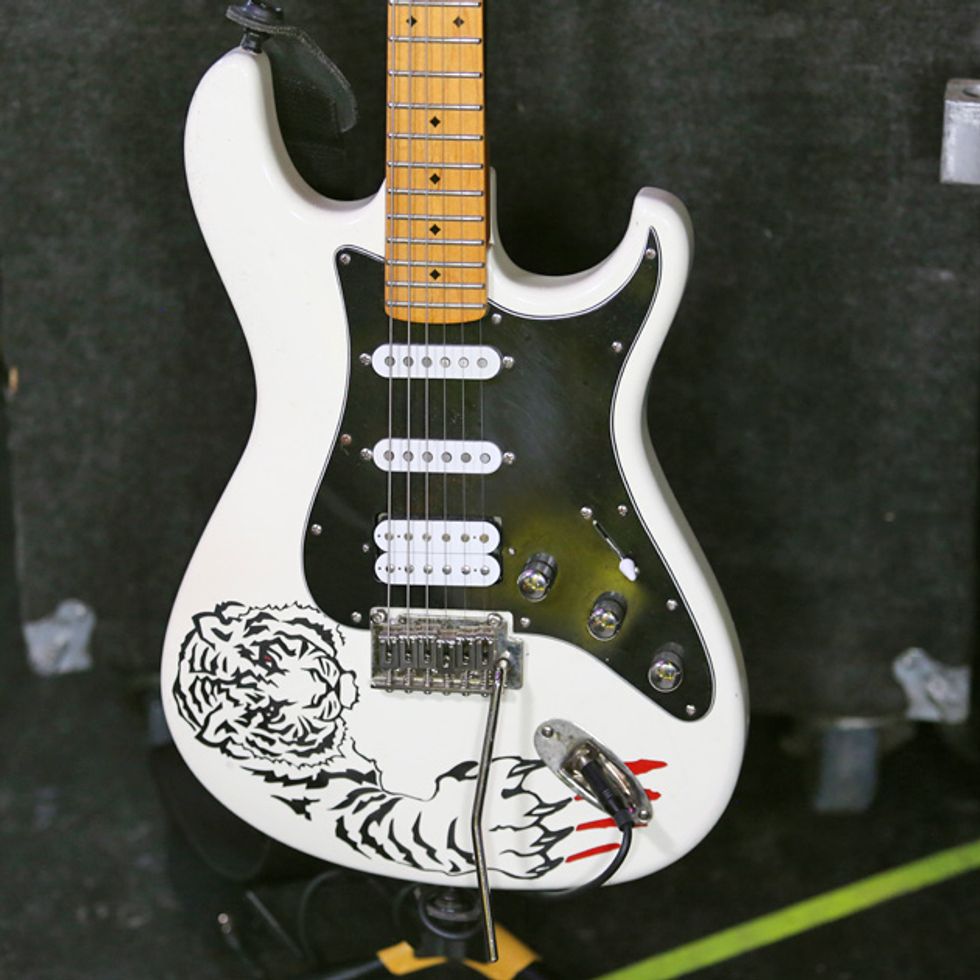
Chris Caffery’s Zelinski is a special TSO build with white tiger engraved graphics. The neck is engraved with the company’s patent-pending Z-Glide that’s reminiscent of a diamond pattern for a better feel and smoother movement. It’s loaded with a Seymour Duncan JB set.
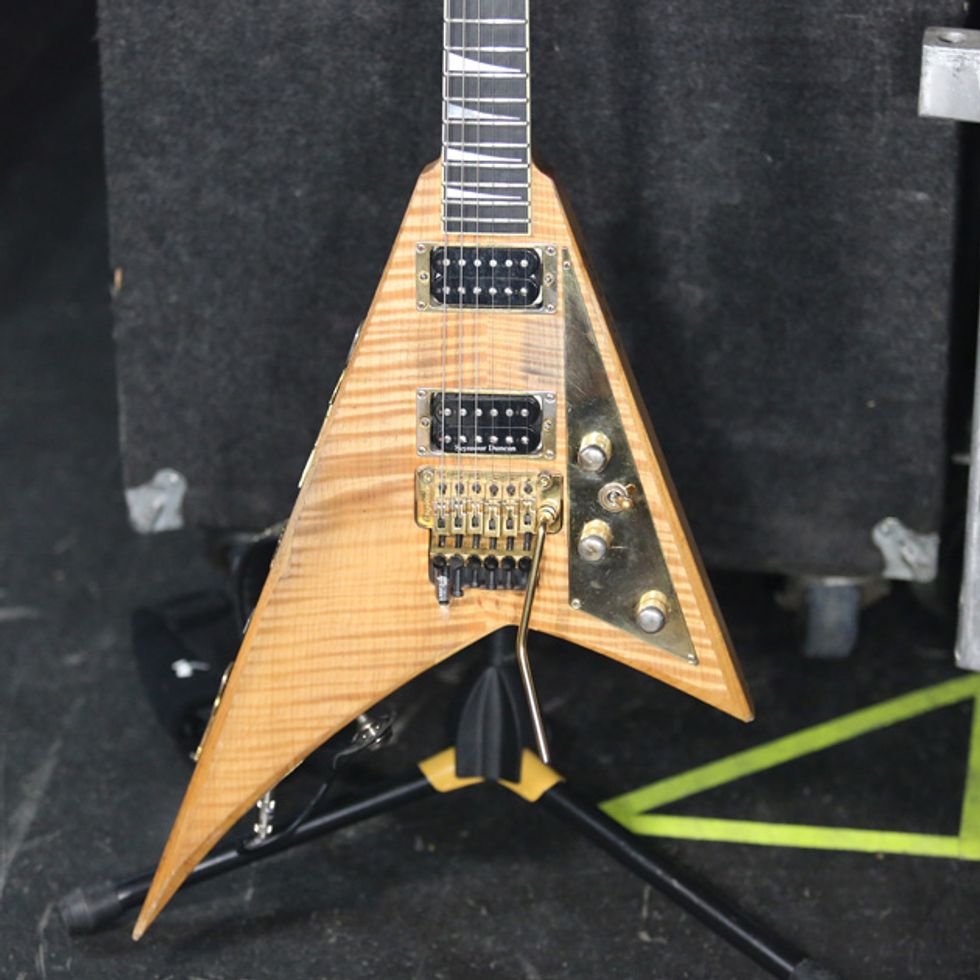
This 2001 Jackson V was revamped by Chris Caffery’s tech, Fred Kowalo, who put in a set of Seymour Duncan JB pickups and returned the wiring to the proper specs. It is equipped with an Eddie Van Halen Floyd Rose D-Tuna.
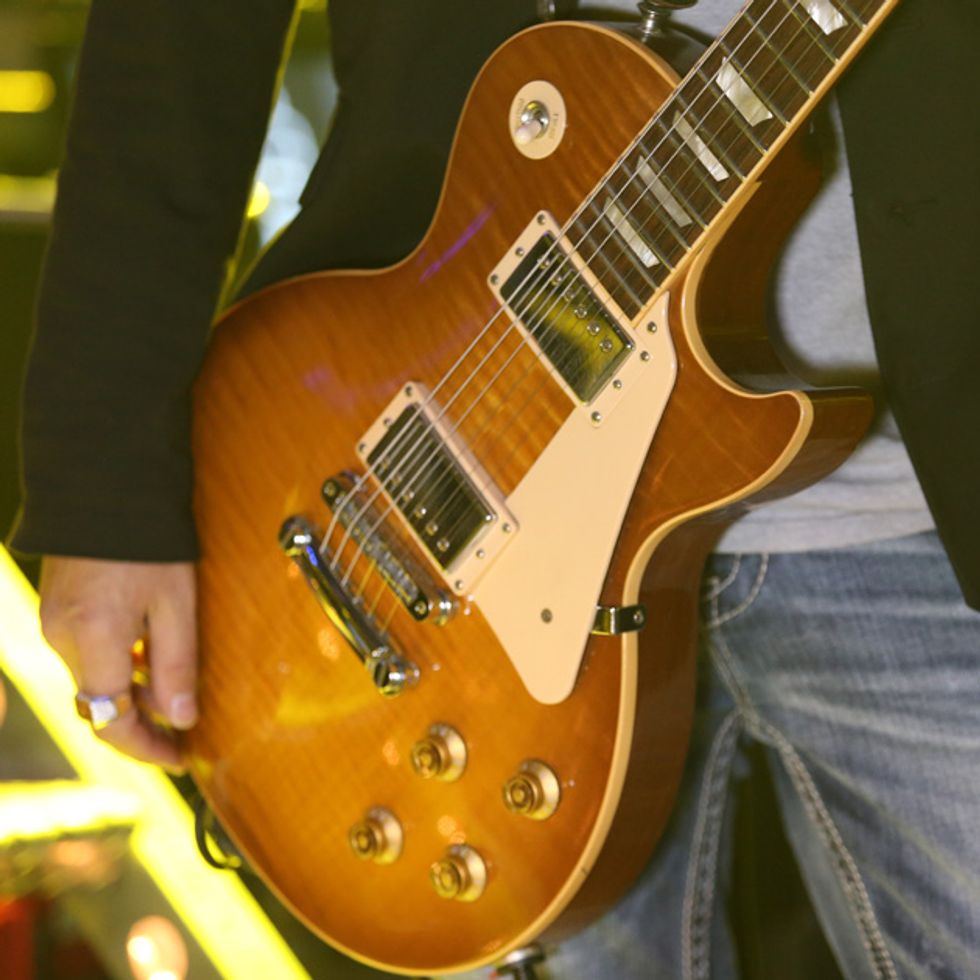
This 2009 Gibson Les Paul is equipped with a TonePro bridge and tailpiece, Grover locking tuners, and a Hipshot GT1 Grover-style drop-D tuner.

The graphics on Chris Caffery’s 2008 Dean are from TSO’s Night Castle album and sports Seymour Duncan pickups and an EVH D-Tuna.
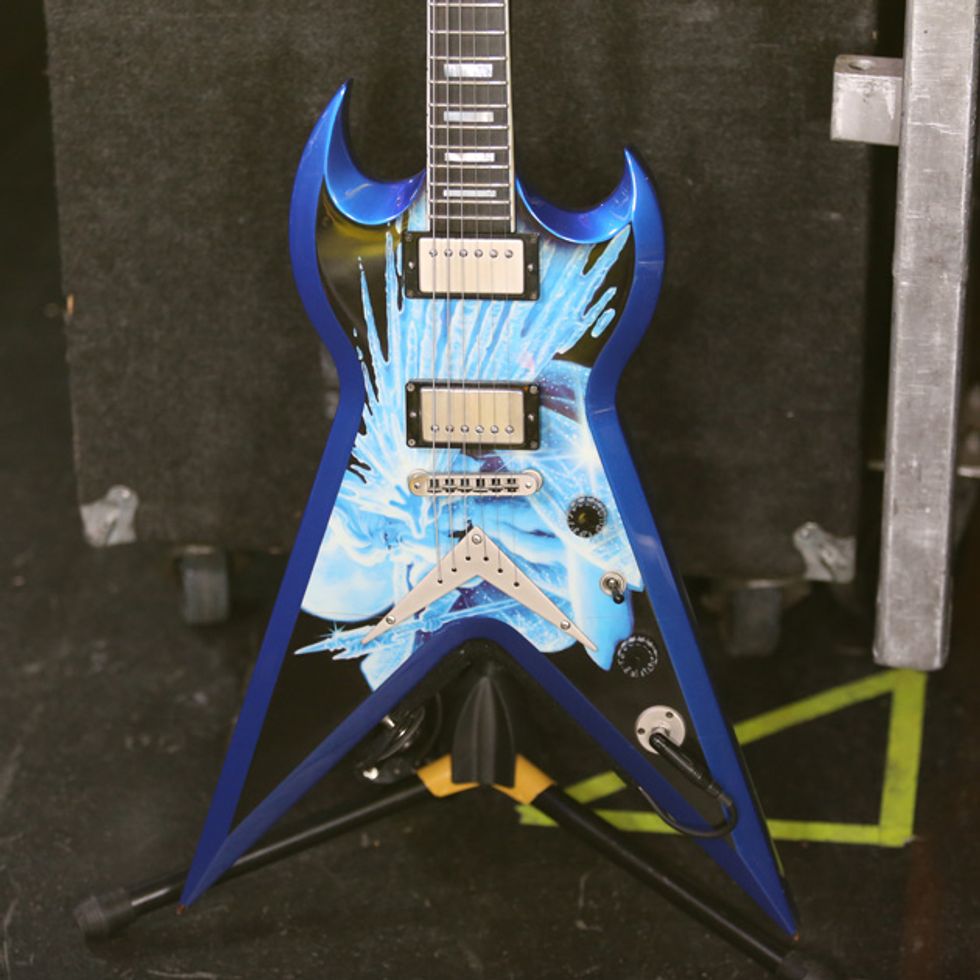
Chris Caffery’s other decked-out Dean is dubbed “The Wizard” and features custom TSO graphics, Grover tuners, and Seymour Duncan JG pickups.
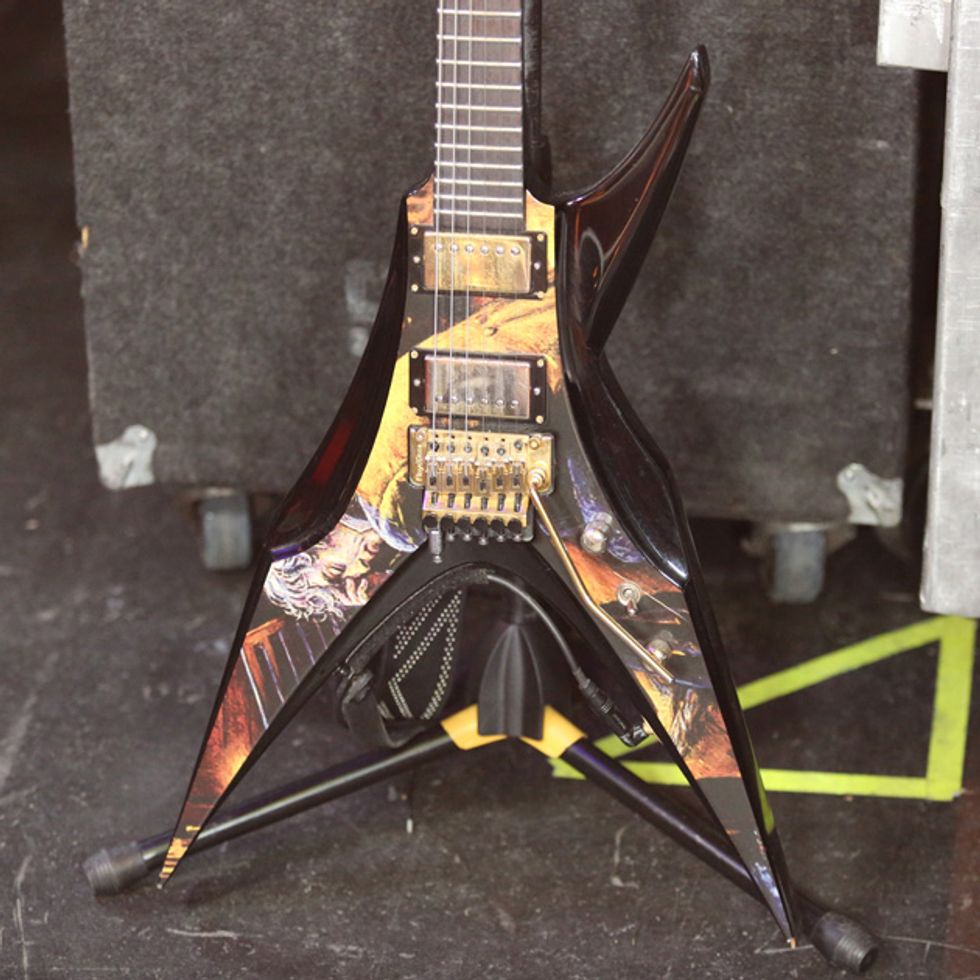
This 2009 Zelinsky DBZ features Beethoven graphics, Seymour Duncan JB pickups, and an EVH D-Tuna.
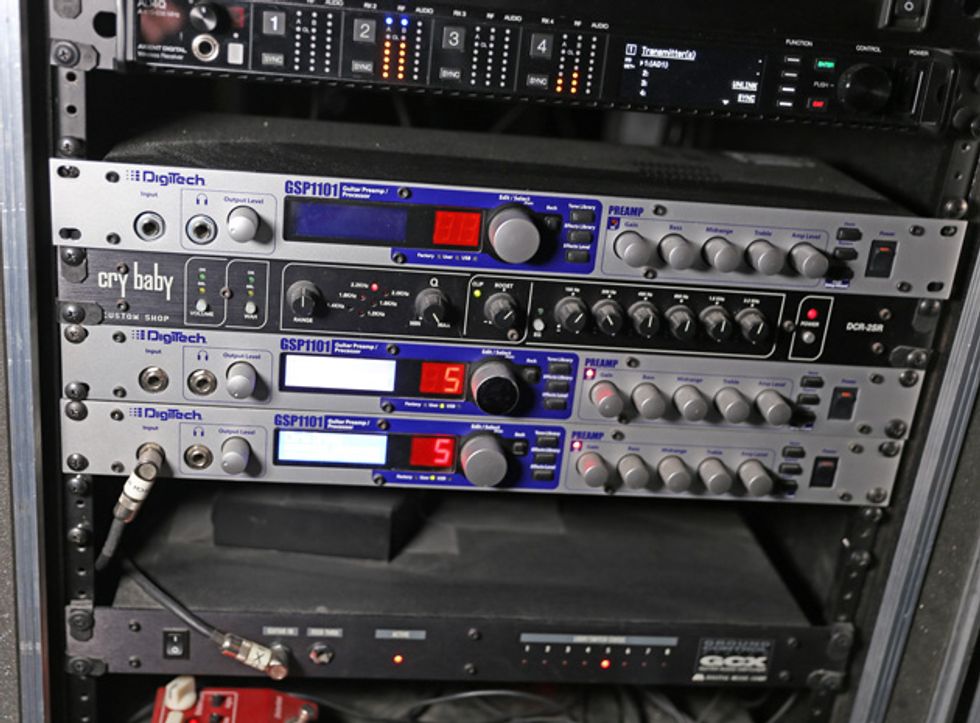
The centerpiece of Chris Caffery’s rack are his DigiTech GSP1101 units. He rolls with three vintage models and combines them with a Dunlop Cry Baby rackmount wah.

In Chris Caffery’s pedal rack sits a Fulltone GT500, H.B.E. Power Screamer, and a Boss CE-5 Chorus Ensemble. The whole rig is powered by a Furman AR-15 Voltage Regulator.
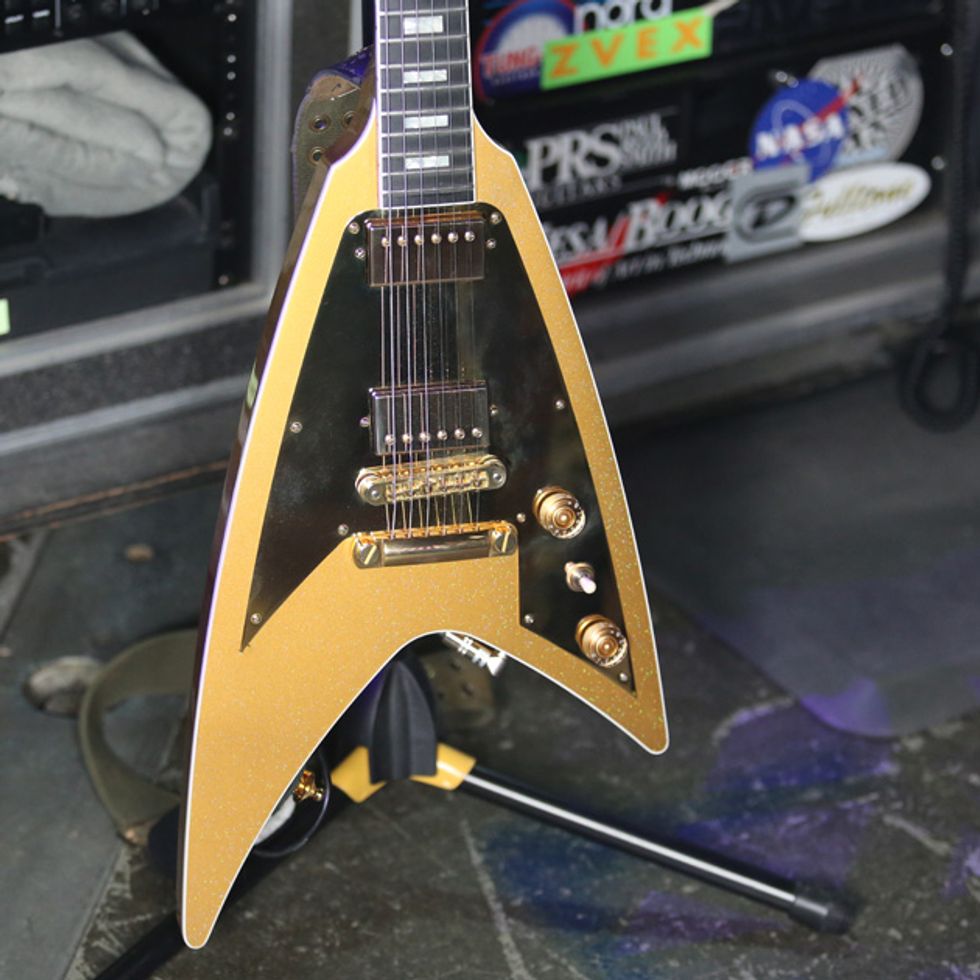
And we couldn't forget this one — a curvaceous interpretation of a classic is Joel Hoekstra’s 2018 Gibson Modern V.
Click below to listen wherever you get your podcasts:
 |  |
 |  |
D'Addario XT Strings: https://www.daddario.com/XTRR





![Rig Rundown: AFI [2025]](https://www.premierguitar.com/media-library/youtube.jpg?id=62064741&width=1245&height=700&quality=70&coordinates=0%2C0%2C0%2C0)












 Shop Scott's Rig
Shop Scott's Rig
![Devon Eisenbarger [Katy Perry] Rig Rundown](https://www.premierguitar.com/media-library/youtube.jpg?id=61774583&width=1245&height=700&quality=70&coordinates=0%2C0%2C0%2C0)













 Zach loves his Sovtek Mig 60 head, which he plays through a cab he built himself at a pipe-organ shop in Denver. Every glue joint is lined with thin leather for maximum air tightness, and it’s stocked with Celestion G12M Greenback speakers.
Zach loves his Sovtek Mig 60 head, which he plays through a cab he built himself at a pipe-organ shop in Denver. Every glue joint is lined with thin leather for maximum air tightness, and it’s stocked with Celestion G12M Greenback speakers.








